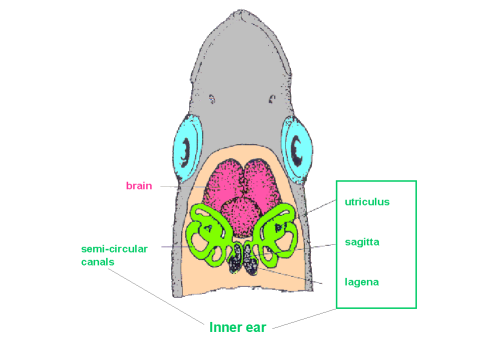




Site best viewed with 1024 x 768 resolution
What are Otoliths?
|
Otoliths are found in the inner ear of Osteichthyan fish. They are formed by calcium
carbonate crystals
and organic materials of proteic origin. The otoliths of Teleostean fish are basically made up
of aragonite crystals.
 Otolith microstructure. Aragonite crystals. (adapted from Beatriz Morales-Nin, 1987) There are three pairs of otolithic organs in the fish's inner ear: the utricule, lagena and saccule. The otolithic organs are formed by an epitelium that surrounds the otoliths. In the epitelium there is an area made up of sensorial cells, called the macula. There is a depression in the otolith called the sulcus acusticus, which is related to the sensory macula. Otoliths are found at the back of the fish's cranium. Each otolithic organ is associated with a certain type of otolith. The lapillus is located in the utriculus, the asteriscus in the lagena and the sagitta is located in the sacculus. The sagitta is the otolith with the largest morphologic variability and therefore is the most studied. On the AFORO webpage all the database images correspond to sagittae.  Anatomical position of the fish's inner ear (adapted from Secor et al., 1992). In fish, the inner ear has two basic functions: to perceive sounds (acoustic function) and to perceive angular acceleration and gravity (equilibrium function). These two functions correspond to two morphologically different parts. The upper part of the inner ear (utriculus and semicircular channels) mainly controls the equilibrium function. The lower part (sacculus and lagena) is specialised in receiving sound. When a sound wave arrives, the otolith acts as a transductor of this to the fish's nervous system.  Inner ear structure (adapted from Lombarte, 1990). |